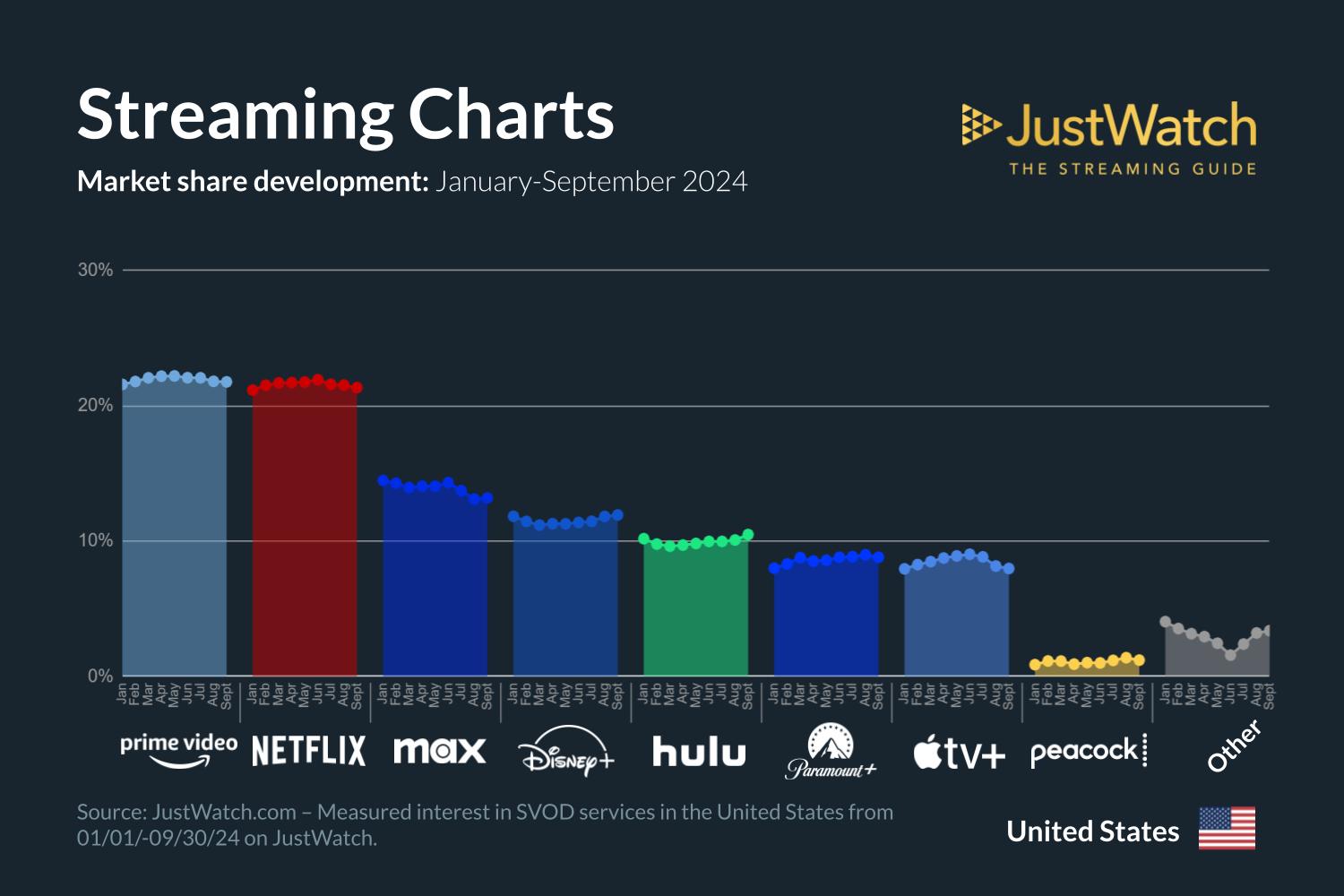
Customers have a lot of options to choose from when it comes to streaming platforms, and Apple TV+ is one of them. But how does TV+ compare to its competitors? A new JustWatch report first seen by 9to5Mac reveals just that.
Apple TV+ market share in the US
According to JustWatch, the Apple TV+ market share in the US has been fairly consistent over the last few quarters. For instance, the platform grew by 1% in the first quarter of the year, reaching 8% market share. Apple TV+ grew another 1% in the second quarter, overtaking Paramount+. But what about the situation in the third quarter?
JustWatch reveals that Apple TV+ has lost ground to Paramount+ after overtaking it last quarter and is now back at 8% market share in the US. Even so, the figures are quite consistent.
“Apple TV+ displays interesting progress throughout 2024 with peak numbers from April to July. The platform has consistently sustained its market share since the beginning of the year,” JustWatch says. Meanwhile, Disney+ and Hulu (also owned by Disney) grew by 1% each during the last quarter.
Unsurprisingly, Amazon Prime Video and Netflix continue to lead the ranking of streaming platforms with the highest number of subscribers in the US. Also, this is the first time that Peacock has made it into the charts with a 1% share.
You can take a look at the full market share ranking provided by JustWatch below:
- Amazon Prime Video: 22%
- Netflix: 21%
- Max: 13%
- Disney+: 12%
- Hulu: 10%
- Paramount +: 9%
- Apple TV+: 8%
- Peacock: 1%
- Others: 6%

Apple TV+ was launched in 2019 with a small catalog of original movies and shows. Currently, the platform has around 271 titles available – much less than Amazon Prime Video’s 13,000 titles. Even so, Apple TV+ content has already won multiple important awards since 2019.
Read also
FTC: We use income earning auto affiliate links. More.





